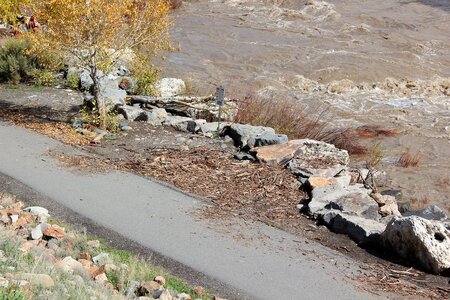John Farley
Supporter
As is well known, heavy rain from tropical systems can occur far inland, especially in mountainous terrain. Even so, Colorado is probably not the first place you think of for this happening, although it sometimes does happen. And it happened the last few days from remnants of Pacific Hurricane Priscilla. From very early Friday morning through late morning today (Sunday, Oct.12), 3-4 inches of rain fell in the Pagosa Springs, CO area, 2-3 around Durango, and upwards of 5-6 inches in the San Juan Mountains. This led to major flooding in the Pagosa Springs and Vallecito areas, with 380 homes evacuated and many flooded around Vallecito Reservoir and the third-highest crest on record on the San Juan River in Pagosa Springs (highest since 1927}. This occurred around 6 p.m. last night, leading to the closure of U.S. 160, a water main break, some homes flooded, and flooding of parts of the Springs Resort, the largest of the three hot springs resorts in Pagosa. The river fell about 3 feet from the crest by early this morning, then remained at that level through much of the day. I took some pictures this afternoon:
River in downtown Pagosa around 2:30 this afternoon, still flowing strongly:
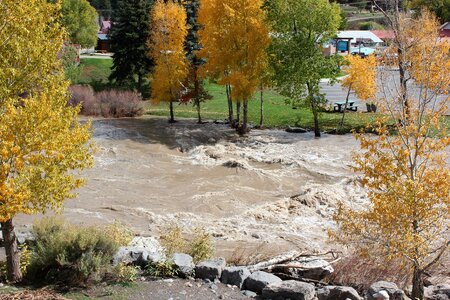
While the pool and a couple of the upper soaking tubs in the main area of The Springs Resort were not flooded and are open, many of the soaking tubs did flood and are closed.
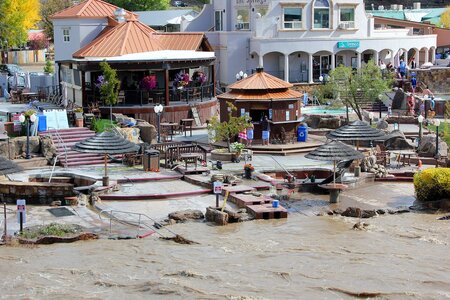
At least one soaking tub was still flooded this afternoon, even after the river had fallen several feet from its crest.
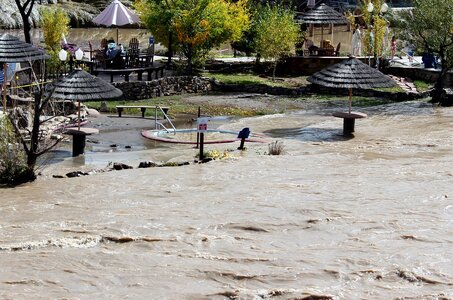
Still some big logs in the river, too.
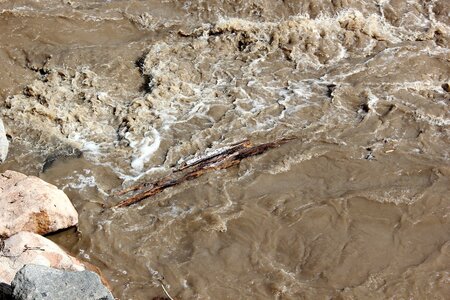
According to the Pagosa Weather website, the all-time record crest in 1911 (about 5 feet higher than yesterday) was also the result of a tropical system, and the second-highest in 1927 may have been, too. After those and this flood, the next 3 highest were from spring snow runoff. So yes, although they are rare, some of the biggest floods in and near the southwest Colorado mountains do result from tropical systems. And now remnants of TS Raymond are moving in along the same track as Priscilla. This one does not look quite as intense, but nonetheless the river flood warning from the NWS suggests that the crest from that rain could be the fourth-highest on record. Updates to come.
One other note: we received 3.14 inches of rain at our house. This on top of an above-average 2.19 inches for the month of September. Before that our area was in extreme drought, and 2 months ago the river was at record low levels for early to mid August.
River in downtown Pagosa around 2:30 this afternoon, still flowing strongly:

While the pool and a couple of the upper soaking tubs in the main area of The Springs Resort were not flooded and are open, many of the soaking tubs did flood and are closed.

At least one soaking tub was still flooded this afternoon, even after the river had fallen several feet from its crest.

Still some big logs in the river, too.

According to the Pagosa Weather website, the all-time record crest in 1911 (about 5 feet higher than yesterday) was also the result of a tropical system, and the second-highest in 1927 may have been, too. After those and this flood, the next 3 highest were from spring snow runoff. So yes, although they are rare, some of the biggest floods in and near the southwest Colorado mountains do result from tropical systems. And now remnants of TS Raymond are moving in along the same track as Priscilla. This one does not look quite as intense, but nonetheless the river flood warning from the NWS suggests that the crest from that rain could be the fourth-highest on record. Updates to come.
One other note: we received 3.14 inches of rain at our house. This on top of an above-average 2.19 inches for the month of September. Before that our area was in extreme drought, and 2 months ago the river was at record low levels for early to mid August.

